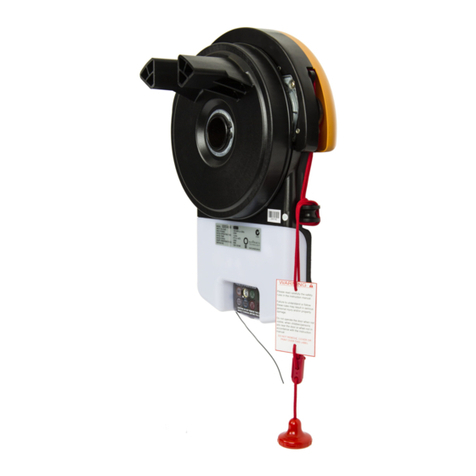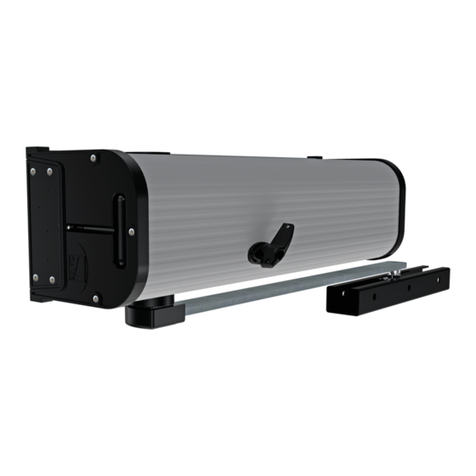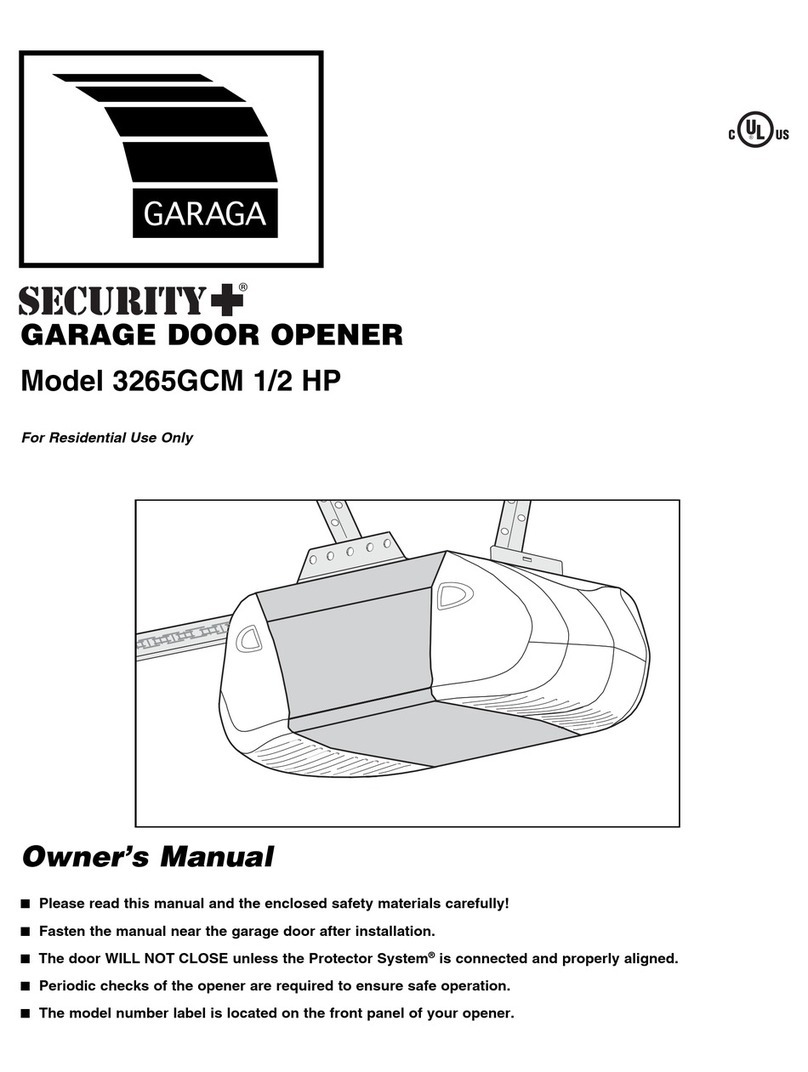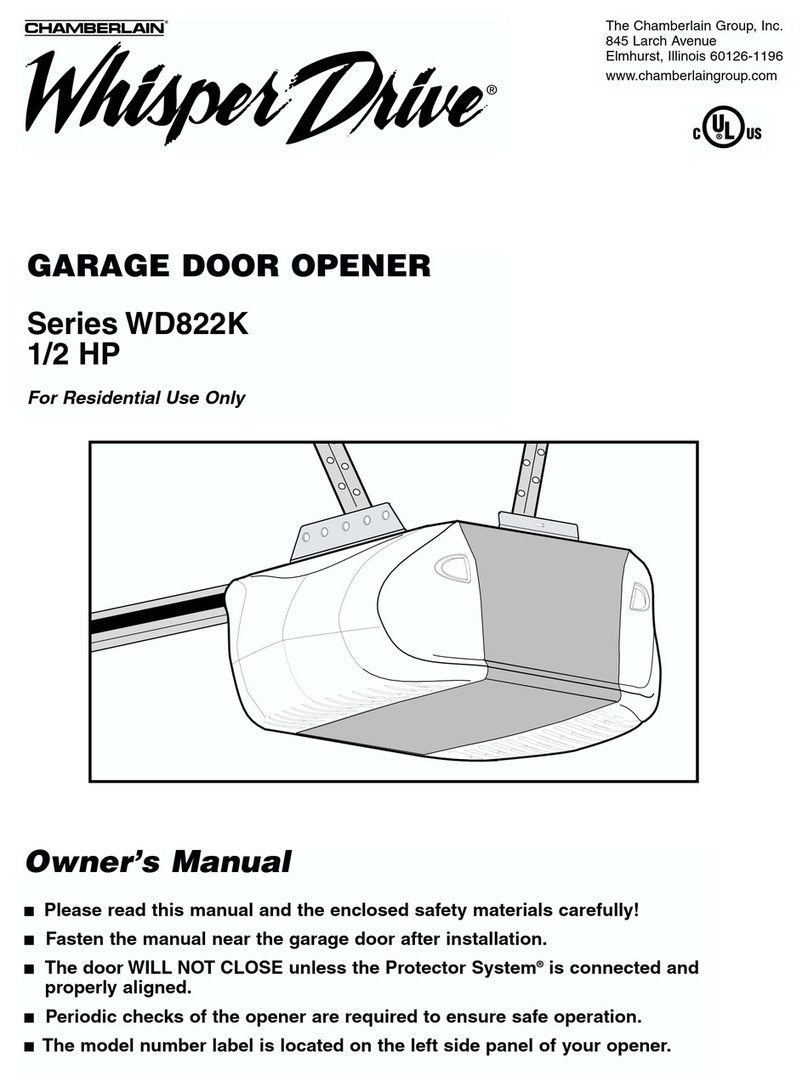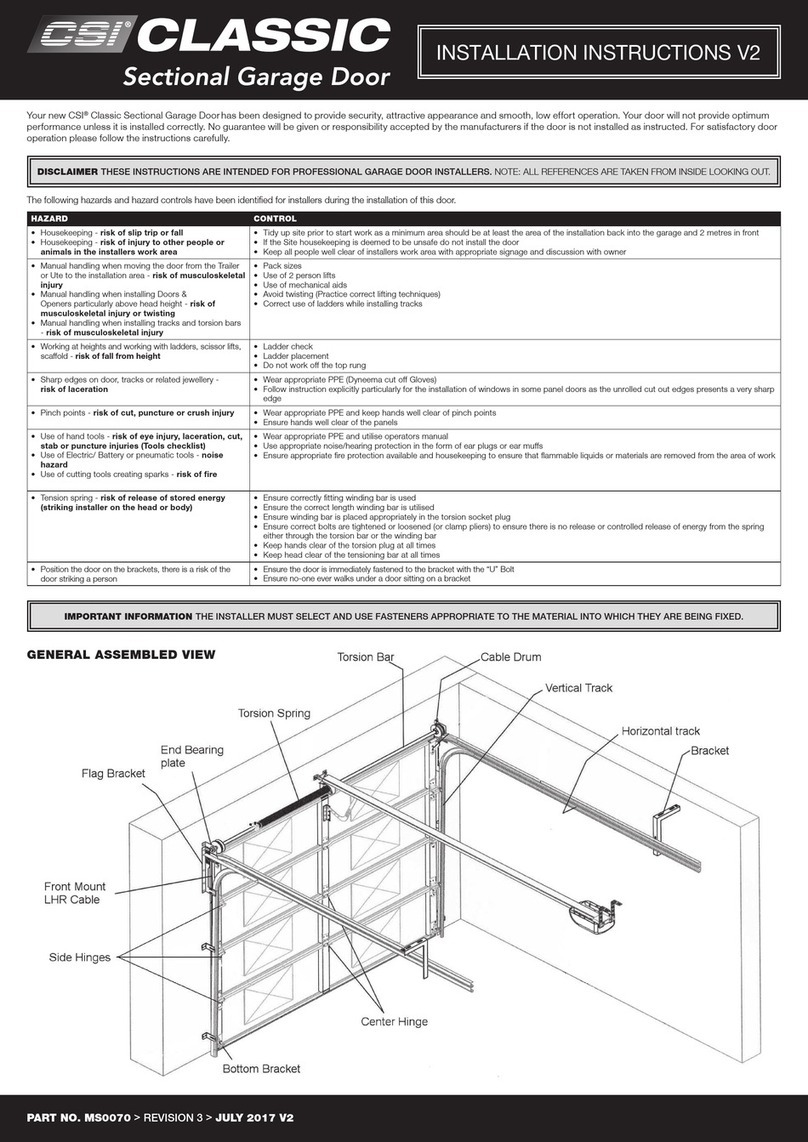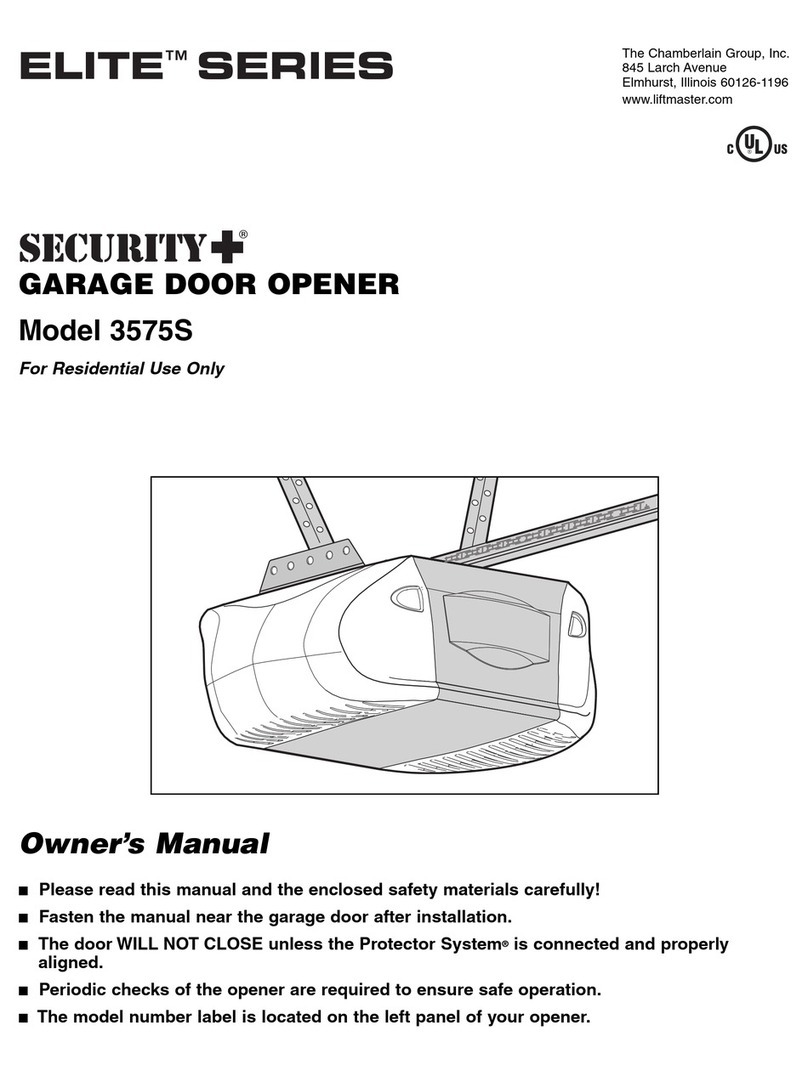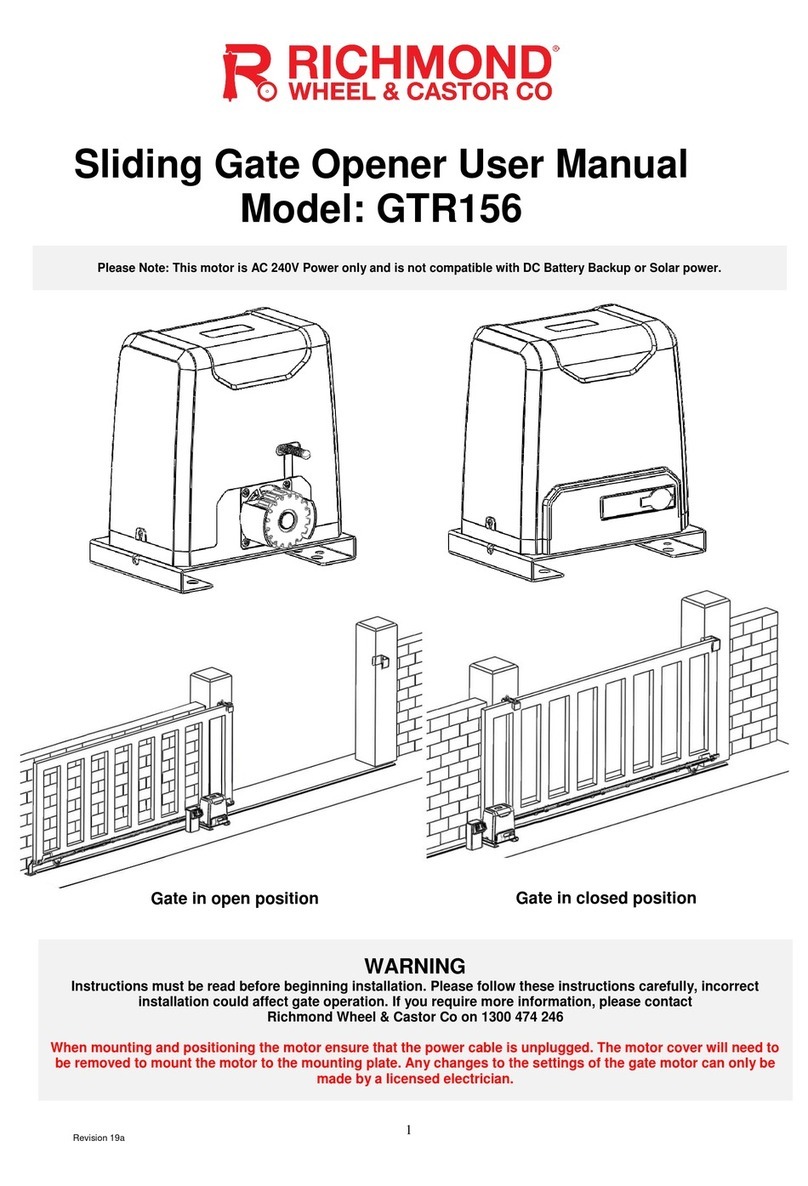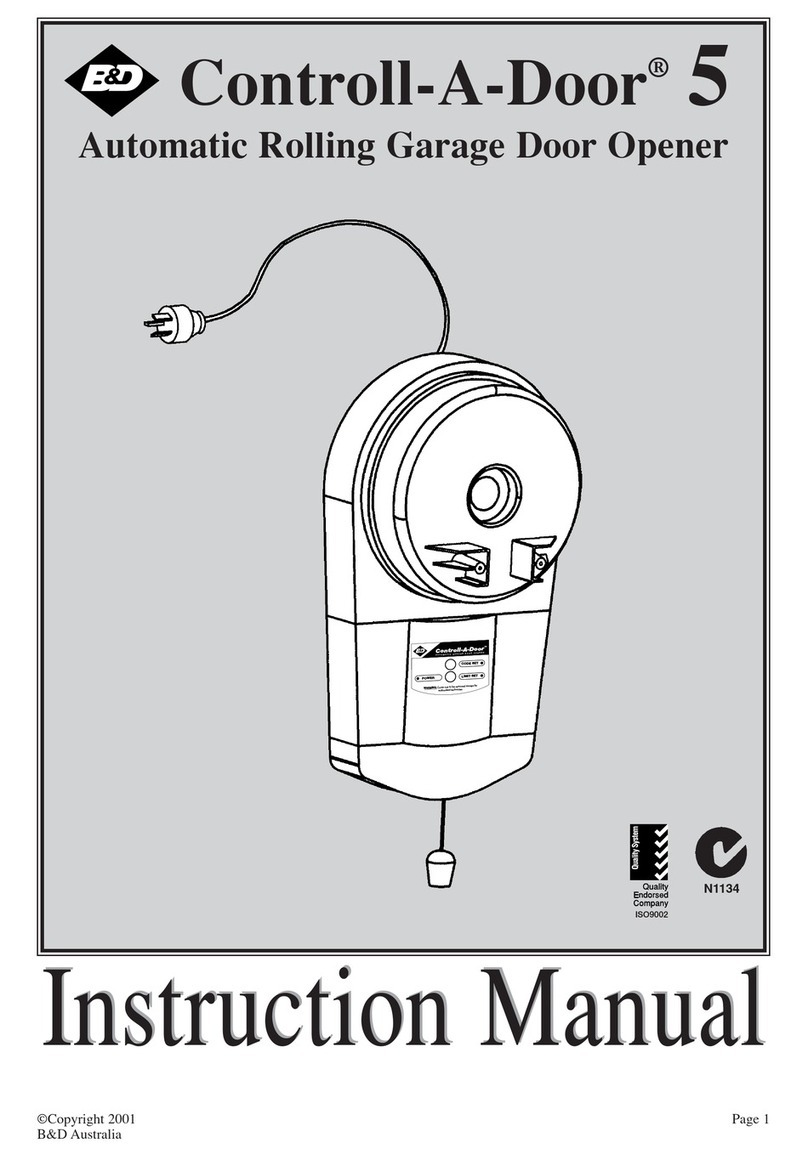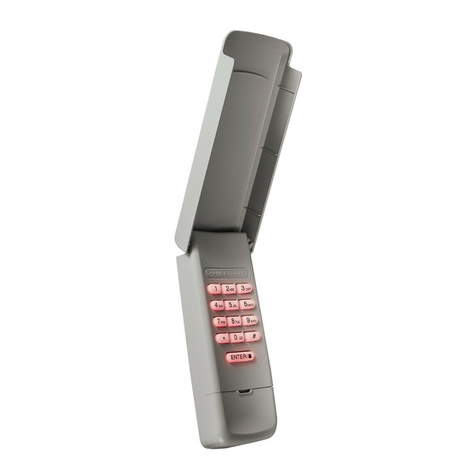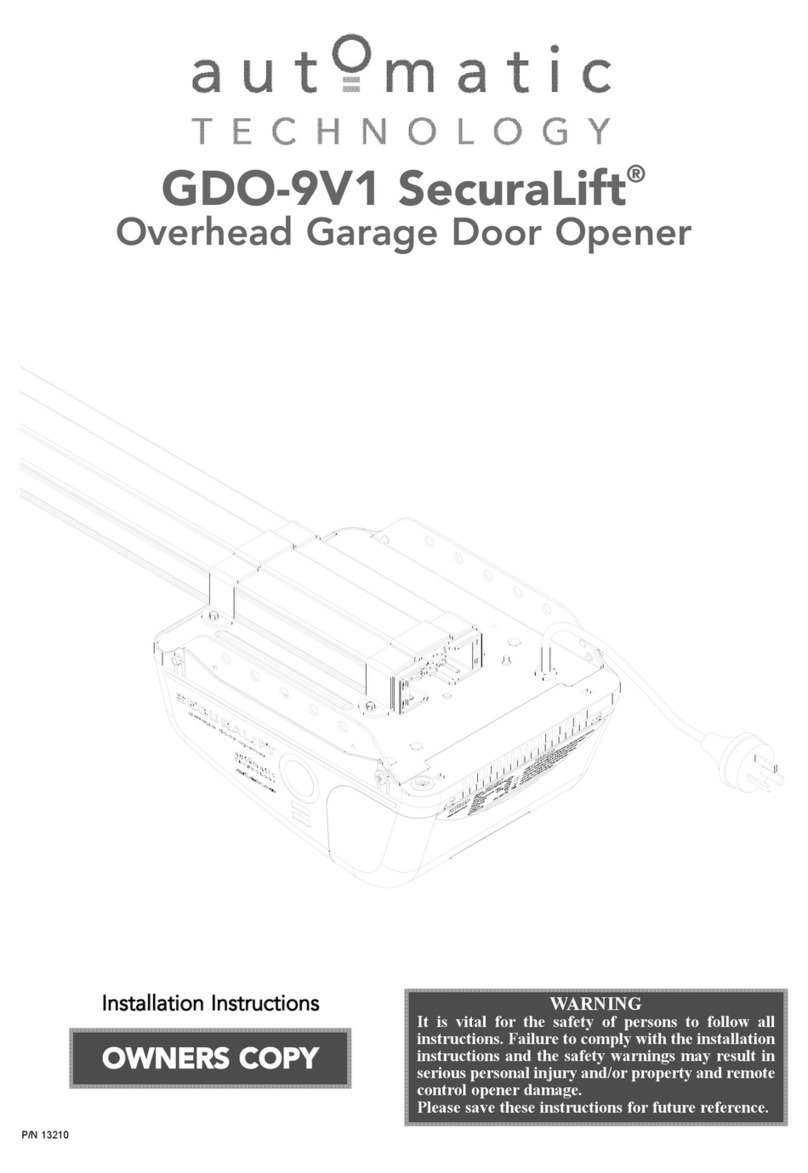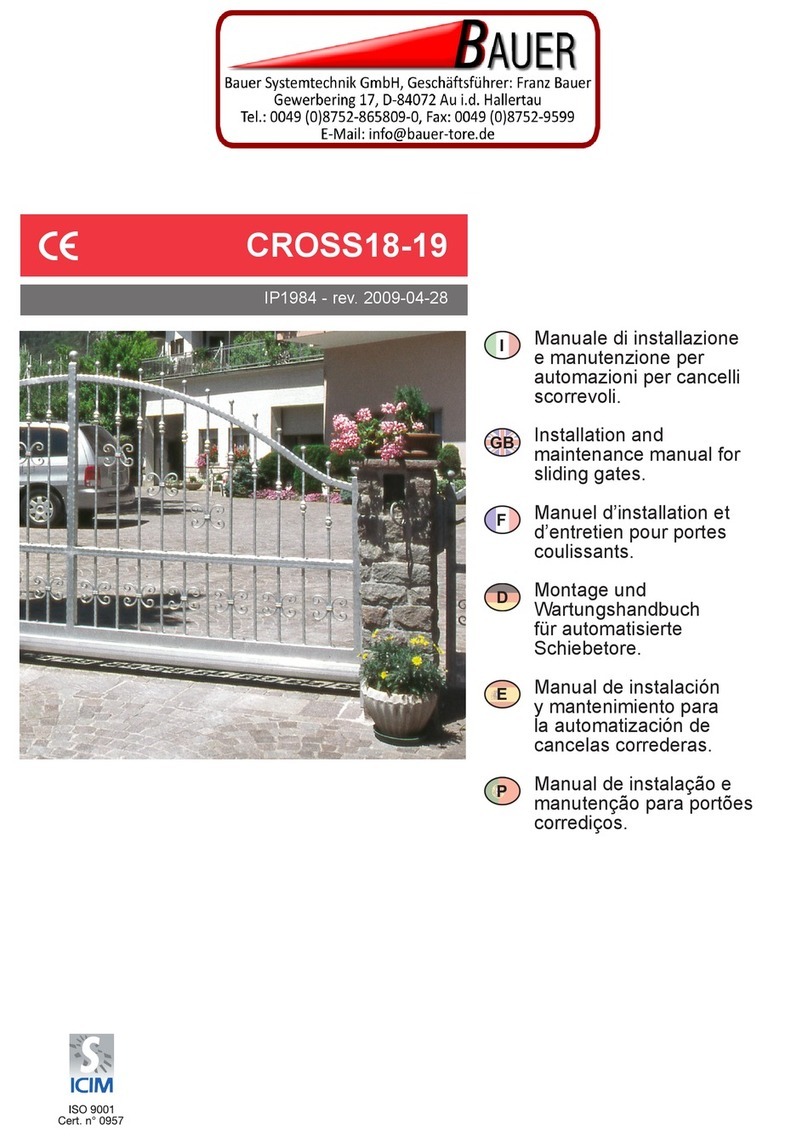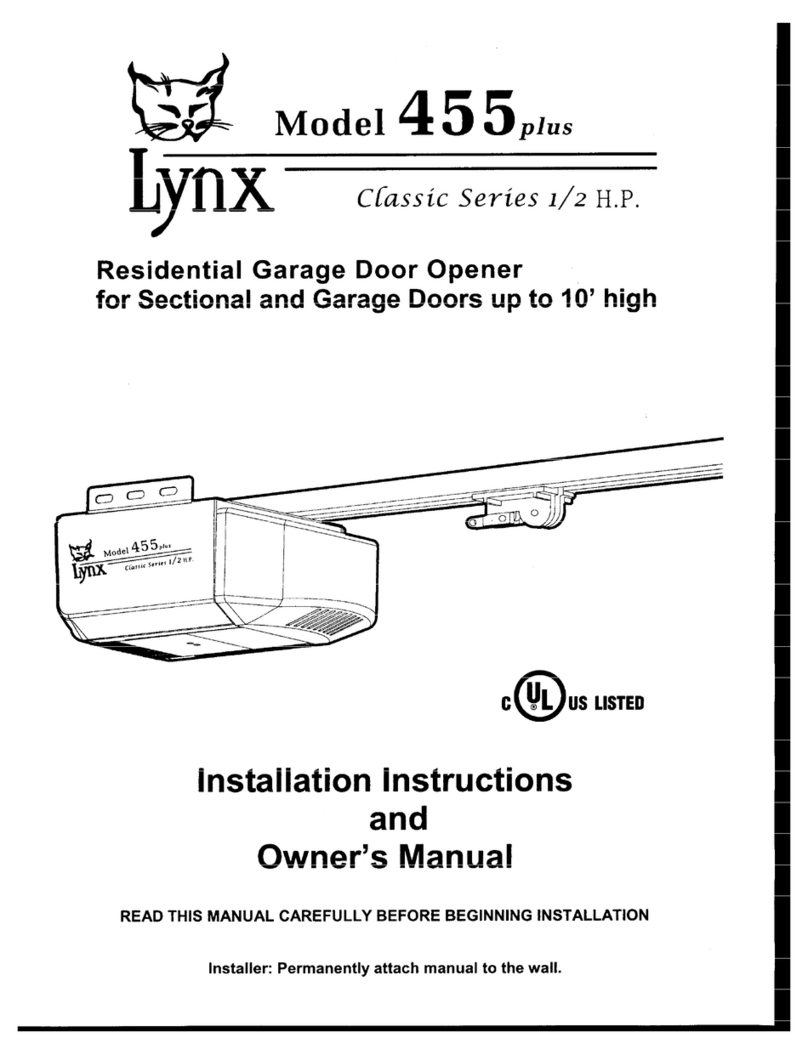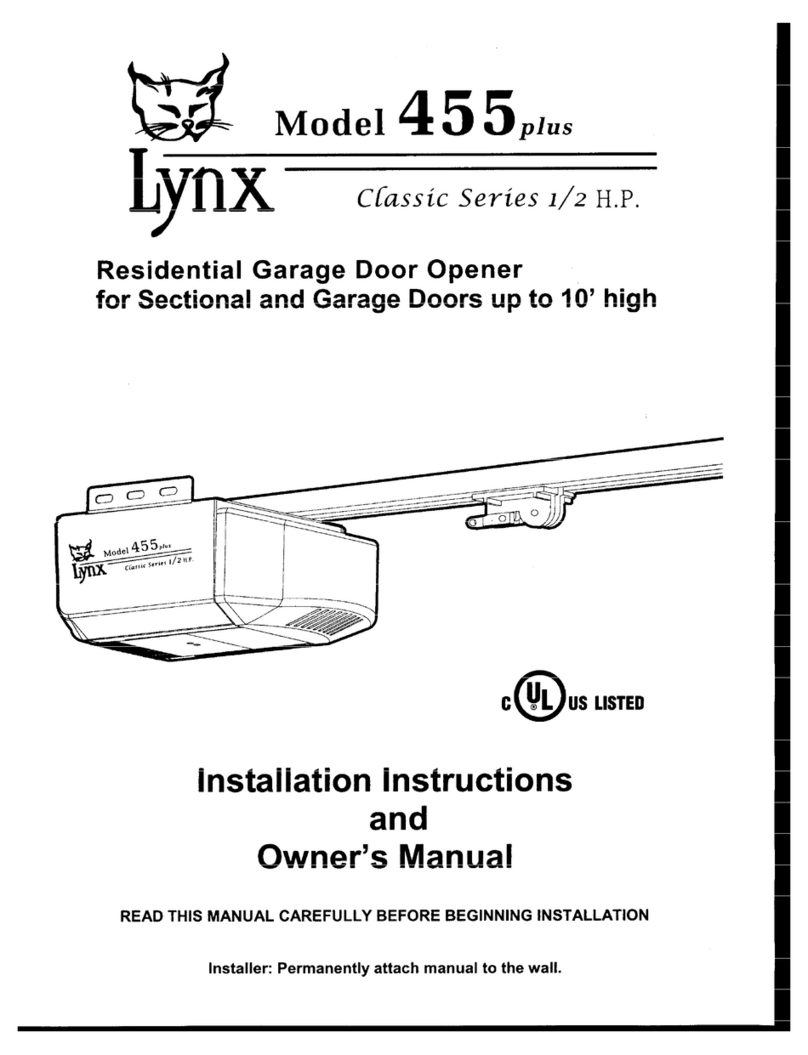
WIRING TYPE
LDT and LDTB models are equipped with the LX900
board (programing and operation, page 12, eld wiring,
page 16). Upon installation the operator will be in C2
mode (which means only constant pressure will close the
door).
To achieve B2 mode (where a momentary contact can be
used to close the door) an entrapment protection device
must be wired into the beam terminals according to the
wiring diagram. Once the LX900 detects there is no
obstruction it will switch to B2 Mode.
CONTROL STATION LOCATION
All operators are supplied with some type of control
station. Generally a three button station (OPEN/
CLOSED/STOP) is provided. Mount the control station
within sight of the door, at a minimum of ve (5) feet
above the oor so small children cannot reach it, and
away from all moving parts of the door.
RADIO CONTROL
All LDT series operators have internal antenna’s. LX900
compatible Single button, three button, or OPEN/CLOSE/
STOP (OCS) transmitter(s) are optional accessories.
While in B2 Mode, transmitters will operate the door the
same as a wall control station. Also on all LDT series
operators, terminal strip is provided on the side of the
electrical enclosure labeled as a 24 Volt Class 2 circuit
and numbered (1,2,3). All standard radio receivers
may be wired to this terminal strip. Single channel
transmitters will then open a fully closed door, close a
fully open door, and reverse a closing door from the radio
transmitter. However, for complete door control from a
remote, a commercial three-channel radio receiver (with
connections for OPEN/CLOSE/STOP) is recommended.
ADDITIONAL ACCESS CONTROL EQUIPMENT
Locate any additional access control equipment as
desired (but so that the door will be in clear sight of the
person operating the equipment), and connect to the
control board in accordance with the LX900 WIRING
CONNECTIONS diagram. Any control with a normally
open (N.O.) isolated output contact may be connected in
parallel with the OPEN button or to the momentary switch
terminals. More than one device may be connected in this
manner. Use 18 gauge wire or larger for all controls.
External Interlock Switch
If an external interlock switch is required on the door, refer to the LX900 WIRING CONNECTIONS diagram for installation.
This switch should have a contact rating of at least 3 amps @ 24VAC. The switch must be wired in series with the STOP
or COM terminals so that the door will only operate while the switch is in its closed circuit state.
To prevent possible SERIOUS INJURY or
DEATH from a moving garage door:
• ALWAYS keep remote controls out of
reach of children.
• NEVER permit children to operate, or
play with remote controls.
• Activate gate or door ONLY when it can be seen
clearly, is properly adjusted, and there are no
obstructions to door travel.
• ALWAYS keep gate or garage door in sight until
completely closed. NEVER permit anyone to cross
path of moving gate or door.
To prevent possible SERIOUS INJURY or
DEATH:
• Install the control station within sight of
the door at a minimum of ve (5) feet (to
prevent operation by children), but away
from the door and its hardware.
• Install reversing sensors when the 3-button control
station is out of sight of the door or ANY other control
(automatic or manual) is used. Reversing devices are
recommended for ALL installations
• A reversing edge MUST be installed when a receiver
is used to activate a commercial door opener.
CONTROL WIRING
LDT, LDTB
IMPORTANT NOTE:
Mount warning notice beside or below the push button
station.
WARNING
WARNING
9
